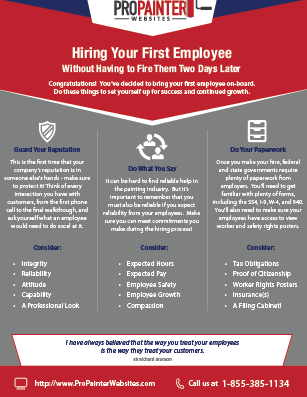Discover How Seasonal Influences Can Impact The Effectiveness Of Industrial External Paint And Figure Out One Of The Most Desirable Times To Guarantee Resilient Results For Your Job
Discover How Seasonal Influences Can Impact The Effectiveness Of Industrial External Paint And Figure Out One Of The Most Desirable Times To Guarantee Resilient Results For Your Job
Blog Article
Author-Fox Skafte
When you're planning an industrial outside paint task, seasonal factors can make or break your outcomes. You'll wish to think about exactly how temperature level and humidity effect paint application and drying out times. Selecting the appropriate season can ensure your paint adheres correctly and lasts much longer. However which periods are genuinely the very best for this type of job? Let's check out the key elements that can influence your job's success.
The Effect of Temperature on Paint Application
When you're planning a business outside painting job, the temperature level can considerably influence exactly how well the paint sticks and dries.
Ideally, you intend to paint when temperature levels range between 50 ° F and 85 ° F. If it's as well chilly, the paint may not treat properly, causing issues like peeling off or fracturing.
On the flip side, if it's as well warm, the paint can dry out also rapidly, avoiding proper bond and resulting in an uneven surface.
You need to likewise consider the moment of day; morning or late afternoon uses cooler temperature levels, which can be extra positive.
Constantly check the manufacturer's referrals for the specific paint you're making use of, as they often offer advice on the perfect temperature level array for ideal results.
Moisture and Its Result on Drying Times
Temperature isn't the only environmental element that influences your commercial external paint project; moisture plays a substantial duty also. High moisture levels can decrease drying times significantly, impacting the overall top quality of your paint task.
When the air is saturated with dampness, the paint takes longer to heal, which can cause concerns like poor adhesion and a higher risk of mold growth. If you're repainting on a specifically moist day, be prepared for extensive wait times between layers.
It's vital to keep track of local weather and plan as necessary. Ideally, go for humidity levels between 40% and 70% for ideal drying.
Maintaining these consider mind guarantees your job remains on track and supplies a long-term coating.
Best Seasons for Commercial Outside Painting Projects
What's the best season for your industrial external paint tasks?
Springtime and early fall are typically your best bets. During these seasons, temperature levels are mild, and moisture levels are typically lower, developing ideal problems for paint application and drying out.
Prevent summer's intense heat, which can cause paint to dry as well swiftly, leading to poor attachment and finish. Likewise, winter months's cool temperatures can hinder correct drying out and healing, running the risk of the long life of your paint job.
Aim for days with temperature levels between 50 ° F and 85 ° F for optimal results. Bear in mind to inspect the local weather forecast for rain, as wet conditions can wreck your job.
Preparation around these elements ensures your painting job runs smoothly and lasts longer.
Verdict
To conclude, preparing your industrial exterior painting jobs around seasonal considerations can make a considerable distinction in the outcome. By stucco painting company throughout the suitable temperatures and moisture degrees, you'll guarantee much better adhesion and drying out times. Bear in mind to keep an eye on neighborhood weather report and choose the right time of year-- spring and very early autumn are your best choices. Taking these actions will certainly help you accomplish a durable and professional finish that lasts.
